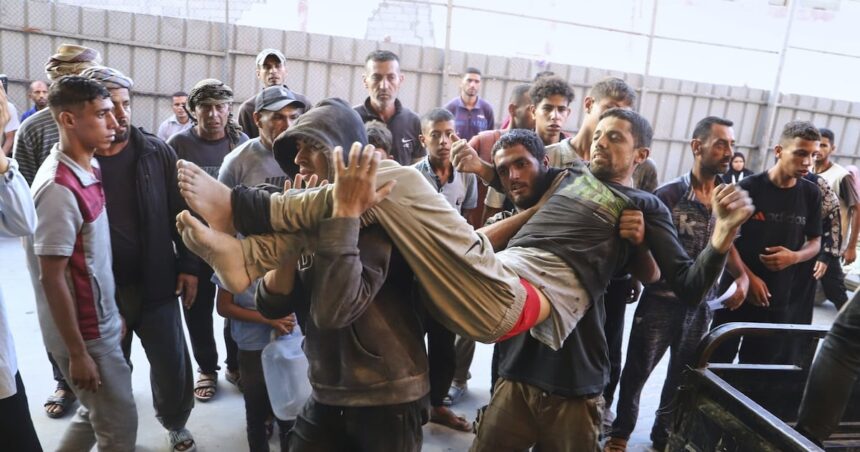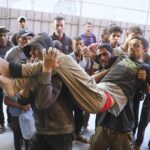In the pre-dawn darkness of northern Gaza, what began as a desperate attempt to secure food aid escalated into another deadly chapter in the region’s humanitarian crisis. At least 32 Palestinians were killed and over 175 wounded Thursday while attempting to reach U.S.-supported food distribution points, according to Gaza health officials.
The violence erupted as thousands of hungry civilians gathered near the coastal road in northern Gaza where aid trucks were expected to arrive. According to multiple eyewitness accounts, Israeli forces opened fire on crowds waiting for desperately needed supplies, though the Israeli military disputes this characterization of events.
“People have been waiting for days, sleeping on the streets just to secure a bag of flour,” said Mohammed Saleh, a Gaza City resident who witnessed the chaos. “When the trucks finally appeared on the horizon, the crowd surged forward in desperation, and that’s when the shooting began.”
The Israeli Defense Forces released a statement claiming their troops fired warning shots after “thousands of Gazans rioted and looted humanitarian aid trucks,” adding that several Palestinians were trampled in the ensuing stampede. However, medical personnel at Gaza’s Al-Awda Hospital report that many victims exhibited gunshot wounds consistent with live ammunition.
This incident marks the deadliest day for Palestinians seeking aid since February, when at least 115 people were killed in similar circumstances. The recurring violence at aid distribution points underscores the near-collapse of Gaza’s humanitarian infrastructure after more than seven months of conflict.
“What we’re witnessing is the systematic breakdown of the aid distribution system,” explained Dr. Amira Hasan, a humanitarian affairs analyst specializing in Middle East conflicts. “When people are starving, orderly distribution becomes nearly impossible without adequate security and coordination.”
The United Nations has repeatedly warned that famine conditions are emerging across Gaza, particularly in the north where access to food, clean water, and medical supplies has been severely restricted. According to the latest World Food Programme assessment, over 90% of Gaza’s 2.3 million residents face acute food insecurity.
International reaction to Thursday’s deaths was swift and pointed. The U.S. State Department called the loss of life “tragic and unacceptable,” while emphasizing the urgent need for improved aid delivery mechanisms. European Union foreign policy chief Josep Borrell described the situation as “a moral failure of the international community.”
The incident comes amid growing political pressure on Western governments to condition military support to Israel on improved humanitarian access to Gaza. Canadian officials have joined international calls for greater protection of civilians and unimpeded humanitarian access.
Economic impacts continue to mount as well. The World Bank estimates Gaza’s infrastructure has sustained over $18.5 billion in damage, with business activity effectively halted across most sectors. The long-term economic rehabilitation of the territory will require substantial international investment, assuming a political resolution can be achieved.
As night fell over Gaza following Thursday’s violence, aid organizations scrambled to adjust distribution plans while families mourned their dead. The fundamental question remains unanswered: in a conflict where even the pursuit of food can prove fatal, what mechanisms can protect civilians’ most basic right to survival?























